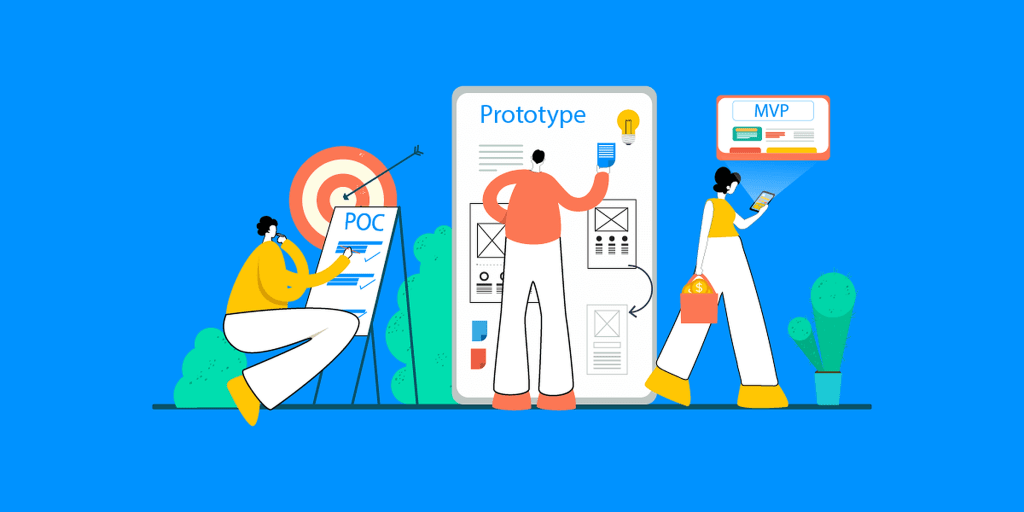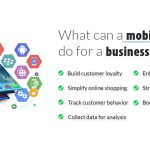In mobile product development, particularly within the startup industry, it is common to encounter the terms proof-of-concept, prototype, and MVP. However, determining the appropriate utilization of these methodologies in a development plan can be a complex task. It is important to understand the distinctions between these three concepts in order to make informed decisions regarding budget allocation and potential success. Our aim is to provide clarification on the differences between a prototype, a proof-of-concept, and an MVP for your mobile development project.
At Ways and Means Technology, we have a wealth of experience in digital product development, having been active in the industry for over a decade. In our interactions with clients, we have frequently been asked for guidance on the appropriate starting point when planning the launch of a new mobile product. Our expertise in mobile-first and cross-platform development, in addition to our experience across various industries such as finance, health tech, consumer applications, marketplaces, and automotive, has provided us with valuable insights on how to approach the decision-making process when choosing between a proof-of-concept, prototype, or MVP.
This article, will present an overview of each concept, including the pros and cons, to assist you in determining the best approach for your next mobile application. However, if you prefer to have our team recommend the most suitable option for your project, we welcome you to reach out and discuss your project with us.
Selecting the Right Approach: A Comparison of POC, Prototype, and MVP
Proof-of-concept (POC) in App Development
- A POC tests the feasibility of a concept from a technical perspective.
- The POC should have a clear end goal and demonstrate if it can be achieved.
- The POC helps to answer the question: can this be built?
When to Consider a Proof of Concept ?
- Before considering a POC, ensure that the product has been defined and features have been categorized by technical difficulty and competitive edge.
- Focus on the high-risk feature of the product, one that is unique and key to delivering value to users.
- Only proceed with a full product launch if the POC is successful.
- If the POC fails, use it as an opportunity to pivot the product and explore new ways to generate value.
The Prototype Approach to App Development
- A prototype is a way to focus on user needs at the beginning of product creation.
- Prototyping is a method of creating a code-free product preview and testing it with audience before development begins.
- Platforms like InVision or Marvel can be used to create a ‘smoke and mirrors’ version of the product which simulates user interactions.
- A product definition process is still necessary to know what to include in the prototype, clarify the solution, and the validation strategy.
- A prototype is a useful tool for running user interviews with the core audience, identifying issues and showcasing the product’s value and commitment in early fundraising efforts.
When to Consider the Prototype Approach to Mobile App Development ?
- When the primary focus is on understanding and meeting user needs before full development begins.
- When a code-free product preview is needed to test with the target audience.
- When there is a need to identify and address any potential issues with the product before development begins.
- When fundraising or investment efforts are ongoing and a prototype can showcase the product’s value and commitment.
- When there is a need to validate the solution, business model and user experience before going into development.
The Minimum Viable Product (MVP) Approach
- The MVP approach allows a team to efficiently gather the most amount of validated feedback from customers.
- This approach allows for immediate learning and adjustments as customers engage with the product.
Three Steps for Creating a Successful MVP
- A successful MVP should have a balance of three factors: usefulness, usability, and delight.
- A great MVP will have a minimum level of usefulness, usability, and delight.
- The MVP should be able to meet the needs of the target customer in an effective and efficient way, while also providing an enjoyable user experience.
Additionally, when considering the MVP approach, it is important to remember that the MVP is not the final product, but rather a minimum version of it. The goal of an MVP is to test the product’s viability in the market and gather feedback from early adopters to inform future development. It is also important to keep in mind that the MVP should only include the most essential features, while leaving room for future expansion and improvement. This approach allows for the most efficient use of resources, while also providing valuable insights for product development and market validation.
Is an MVP Always Necessary?
- An MVP may not be necessary for low-risk business models or for products that are similar to existing ones.
- In this case, gather knowledge from existing products and their user behavior.
- An MVP is necessary if:
- The product demands a different behavior from the user.
- The core value of the product is not new, but the user interface is significantly different.
- The product is to be built iteratively with a focus on lean methodology.
Additionally, if your product has a unique value proposition and addresses a specific problem that hasn’t been addressed in the market yet, an MVP would be crucial to validate your product-market fit and gather feedback from early adopters. It’s also important to consider the MVP approach if the product development process is complex and requires testing and iteration before full launch. Ultimately, it’s important to carefully evaluate the risks and potential of your product and business model to determine if an MVP is necessary for your product development strategy.
Conclusion
In conclusion, determining whether to utilize a proof-of-concept, prototype, or MVP approach for your next mobile app can be a complex decision. It is important to evaluate the specific needs and goals of your product and business model to determine which approach is most appropriate. It is also crucial to keep in mind that the ultimate goal is to move forward and make progress, rather than becoming bogged down in indecision. Ultimately, the important thing is to begin the development process and make adjustments as necessary based on the feedback and results obtained.
It is also important to remember that these approaches are not mutually exclusive and can be used together in a product development plan. A proof-of-concept can be used to validate the technical feasibility of a concept, a prototype can be used to test user engagement and gather feedback, and an MVP can be used to validate product-market fit and gather feedback from early adopters.
Ultimately, it is recommended to consult with experts in the field to determine the best approach for your specific product and business model. At Ways and Means Technology, we have a wealth of experience in digital product development and can provide guidance and support in determining the best approach for your next mobile app.



